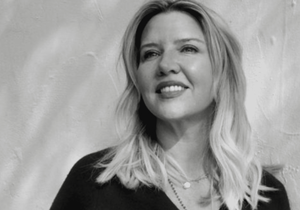Rituals for New Beginnings
Embarkation is thrilling! There’s the planning, the intentions, the dreaming into being—and the wonder and curiosity of what might happen next. This is so strong that there’s even a documented phenomenon called the fresh-start effect, that coincides with demarcations in time (like a round number birthday, or a new year), when people tend to engage in trying something new, in meaning-making behaviors.
These fresh starts are generally energy giving and exciting and joyful! It’s also true that new beginnings and change aren’t always sunshine and rainbows: often there’s fear of the unknown, or gripping at letting go of the familiar. The degree of resistance might depend on whether the new beginning was forced upon us or chosen. And then there’s family systems and genetics: some people are naturally lovers of the new (neophiles), or afraid of the new (neophobes), and it’s challenging to parse how exactly we become avid seekers of the new or comfort.
So we start where we are, and bring ritual and intention to new beginnings. Our intention and state of mind as we begin something new matters: when we have intention for any act we do, it can magnify, and might even shift, its outcome. To get really clear, it’s helpful to ask “Why am I doing what I am doing?” Clear seeing has a power in it, to direct our actions, to direct where our ideation and our energies go.
NEW HOME BLESSINGS
In many cultures, there are rituals even for cross - ing a new home’s threshold for the first time, and there are always symbols of safety, prosperity and happiness. Over boiling milk and rice, or fresh bread and salt for example. There are usually cleansing rituals: opening all the windows and doors, cleaning out every corner, smudging, chanting, ringing bells. There is some element of blessing or inviting good fortune. Family and friends are eventually asked to join in, in something resembling a housewarming, but with more attention than beer and barbecue.
So, after the corners have been scrubbed and the place has been aired out, and maybe after you’ve made your home altar, you might try a personal home blessing. With whoever you’re sharing the space with, take some time to ask yourself what you would like to see happen in this place. Ask questions like: what would we like this home to feel like? How would we like to feel in this home? What would we like to see happen here, how do we spend our time here? What attitudes and values would you like this home to reflect? My friend Elaine’s list was: playful, happy, light, comfortable, generous, alive, with children and dogs and weekend parties. Susan’s was: peaceful, sustainable, musical, uncluttered, restful, with a beautiful library and study to work from. Mark had just two words: safe and warm.
Once your conversation on intentions is completed, translate your intentions and desires into present tense blessings. For example: This home is happy. This home is peaceful. This home is full of music. We are happy here, we are abundant here. We are safe here. This place is a haven for animals. You could do this room by room, also: this kitchen is full of delicious nourishing meals, this bedroom is full of loving embraces and deep sleeps, this play space resounds with peals of laughter. Choose a fortuitous time for your ceremony. Invite a few supportive friends to witness. You can go from room to room saying your person - ally crafted blessings, spritzing scent and playing music—making it festive. Your very own ritual for a new beginning.
THE BLESSINGWAY, OR NEW MOTHER BLESSING
Oh my goodness, new life. How wonderful, the beginning of the adventure of raising a human (which kind of goes on for the rest of life, in different forms)! Once you’ve chosen to allow your body to be a new soul’s earthship, your own identity is also being rebirthed.
Sociologist Dana Raphael named the process of becoming a mother “matrescence”—the journey from intending a pregnancy through the postnatal period. It’s an immense growth period for a woman biologically, socially, and culturally—often changing not only her hips and feet and womb and breasts, but also her skeleton, musculature and neurochemistry. Her brain changes, too, as grey matter activity gets concentrated, and the activities of caring for the infant creates new neural pathways of nurturing. Emotions can intensify: joy, empathy and attachment grow, and so can her aggression and anxiety, as forms of protectiveness.
The baby’s DNA even crosses the placental barrier and stays in the mother’s brain, often for the rest of her life. And priorities and values may shift. While baby showers and naming ceremonies celebrate the baby and supply the household for the little’s arrival, this ceremony, this mother blessing is for the mama’s change in identity.
In the North American Dine Navajo cultures, there is a cycle of ceremonial songs called the Blessingway (there are others, the Holyway, the Enemyway, etc). A Blessingway song cycle is used to enhance a positive event. For example, the Blessingway is used for a girl’s puberty rites (Kinaada), and also as support for an expectant mother. Modern mother blessings are spaces for women to support each other in preparing her spirit and mind for birth and new motherhood, with all of its ups and downs. It’s done in an intimate circle of trusted and respected allies. It’s a place of nourishment and knowledge sharing, where the bearing mother is the focus, as she transits from maiden to mother.
As women gather, they are invited to adorn the mother—to wash and braid her hair, to make her flower wreaths and crowns, to paint her face and hands and feet and belly, or apply some kind of henna, to massage or oil her and drape her. They feed each other with nourishing and celebratory foods. Participants might take turns reading favorite texts. This is also a time of fear abatement: the bearing mother can ask any questions she might have about birth, postpartum and motherhood or express her desires for how she would like to be supported.
Women can share their best (supportive!) advice from their own experiences and give the bearing mother gifts that would ease the physical and mental transition. The most important thing is for the mama to know that she isn’t alone, that she is loved and supported, and that there are women of all ages there for her to lean into.
During pregnancy, there are the physical preparations we all know: breasts growing larger, body chemistry adjusting for the child. If you have loved yourself well, it’s easy to extend this care to your growing little—continuing giving yourself optimal nourishment and activity and rest. During pregnancy, some people become more finely attuned to everything in their environment: noticing sound and smell and information coming in, and choose to edit what they take in.
Women can remind each other of the exceptional nature of this time, which for most Western women happens once or twice in a lifetime at most (the birth rate currently stands at 1.9 for the 80% of women who bear a child at all.) We can take it respectfully and with reverence, recognizing how quickly it will be gone.
The above is an excerpt from our new book Reverence: Modern Rituals for Everyday Life.






















